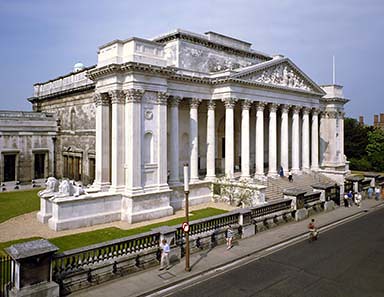
PREV ARTICLE
FULL ISSUE
PREV FULL ISSUE
FEATURED WEB PAGE: THE FITZWILLIAM MUSEUM COIN CABINETThis week's Featured Web Page is a 2011 article in CoinsWeekly on the Coin Cabinet in the Fitzwilliam Museum, Cambridge.The Fitzwilliam Museum did not have any money for acquiring objects when it was built. Hence, it was mainly private collections that were given to the museum as a present. In 1860, the famous topographer and archaeologist William Martin Leake bequeathed his coin collection to the museum for the modest sum of 5,000 Pounds. The money could have been taken from the building funds – a member of the museum advisory board, however, strongly protested against that. His opponent became the archaeologist Churchill Babington who campaigned for the purchase in a booklet. He was a visionary and envisaged that an active coin cabinet would attract further private collections. Yes, he likewise had the many collections in mind which were stored in the different colleges without being cared for. They ought to find a new home in the Fitzwilliam Museum eventually. And they did, although the very last was handed over as loan only recently. Leake‘s collection is stored in a place separated from the other coins until the present day. The wooden caskets in which some private collections came into the museum are real beauties that contribute to the distinctive atmosphere of the museum’s study rooms.

The Coin Cabinet in the Fitzwilliam MuseumWayne Homren, Editor The Numismatic Bibliomania Society is a non-profit organization promoting numismatic literature. See our web site at coinbooks.org. To submit items for publication in The E-Sylum, write to the Editor at this address: whomren@gmail.com To subscribe go to: https://my.binhost.com/lists/listinfo/esylum All Rights Reserved. NBS Home Page Contact the NBS webmaster 
|